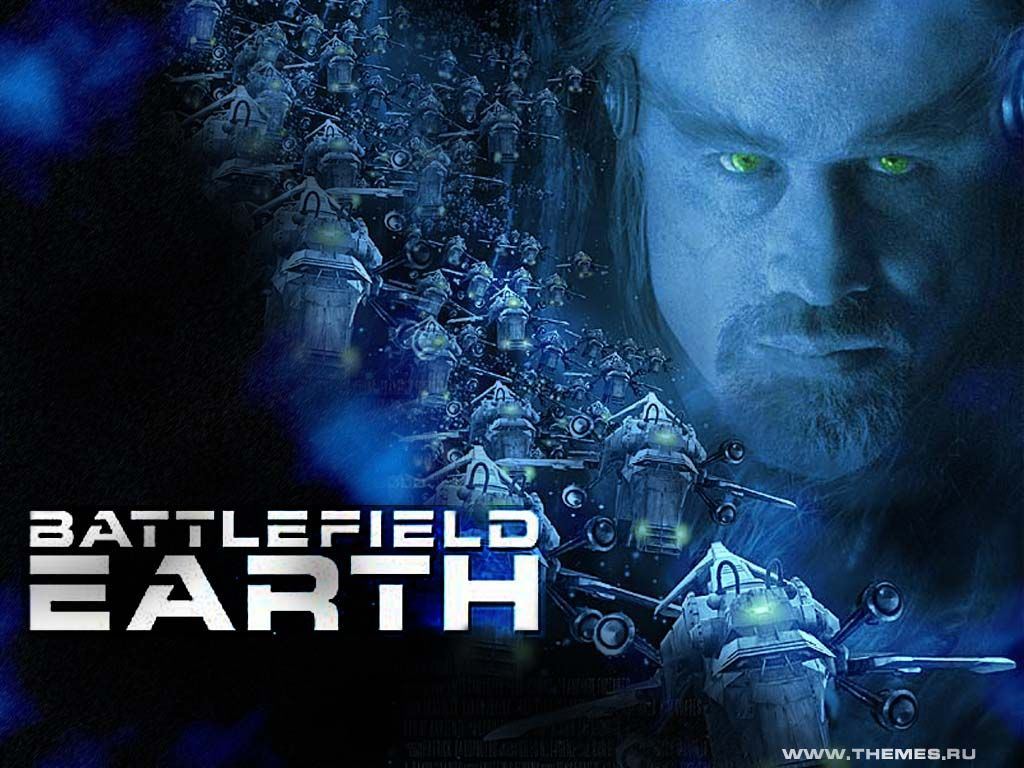Battlefield Earth (2000)

“Battlefield Earth,” released in 2000, is a science fiction film directed by Roger Christian and based on the novel of the same name by L. Ron Hubbard. Despite its ambitious premise and high production values, the film has become infamous for its critical and commercial failure. This essay delves into the various aspects of the movie, including its plot, characters, production, reception, and the reasons behind its disappointing outcome.
Set in the year 3000, “Battlefield Earth” depicts a post-apocalyptic Earth where humanity is subjugated by an alien race known as the Psychlos. These extraterrestrial beings, who have enslaved humanity for a thousand years, mine the planet for its resources, particularly gold. The film follows the protagonist, Jonnie Goodboy Tyler, played by Barry Pepper, a young man who discovers ancient technology and leads a rebellion against the Psychlos.

Tyler, with the help of other survivors, embarks on a quest to overthrow the alien oppressors and reclaim Earth. His journey is marked by encounters with various characters, including a love interest, played by Sabine Karsenti, and a mentor figure. The film’s central conflict revolves around the human struggle for freedom and survival against overwhelming odds.
One of the film’s notable aspects is its diverse ensemble cast, which includes John Travolta as Terl, the main antagonist and a high-ranking Psychlo officer. Travolta’s performance is often cited as one of the film’s most criticized elements. His portrayal of Terl is over-the-top, characterized by exaggerated expressions and a melodramatic delivery that fails to resonate with the audience.
Barry Pepper’s portrayal of Jonnie Goodboy Tyler, while earnest, is somewhat overshadowed by the film’s overall execution. The character’s evolution from a mere survivor to a leader is crucial to the narrative but lacks depth due to the film’s uneven pacing and development.

“Battlefield Earth” had a substantial budget, estimated at around $73 million, but its production faced numerous challenges. Directed by Roger Christian, the film’s visual effects and set design aimed to create a convincing dystopian world. However, the execution fell short of expectations. The alien designs, while creative, were often criticized for their lack of originality and coherence. The film’s attempt to blend futuristic elements with post-apocalyptic themes resulted in a visually cluttered experience.

The screenplay, adapted from L. Ron Hubbard’s novel, struggled to translate the book’s intricate plot and themes into a cohesive cinematic narrative. The film’s dialogue and plot development were frequently described as simplistic and clunky, undermining the potential for a compelling story.
Upon its release, “Battlefield Earth” was met with overwhelmingly negative reviews from critics. It was panned for its poor writing, weak performances, and lackluster special effects. The film’s critical reception was so harsh that it became a byword for cinematic failure, often cited in discussions of the worst films ever made.

Despite its failure, “Battlefield Earth” has gained a certain level of cult status. Its reputation as a “so-bad-it’s-good” film has led to a niche following among fans who appreciate its unintentional humor and ambitious scope. The film’s shortcomings have also made it a frequent subject of discussion in film studies, particularly as an example of how high expectations and a significant budget do not always guarantee success.
In conclusion, “Battlefield Earth” (2000) stands as a notable example of a high-profile film that failed to meet its potential. While it boasts an ambitious premise and a notable cast, its shortcomings in writing, direction, and overall execution led to its critical and commercial downfall. Despite its lackluster reception, the film remains a fascinating case study in the challenges of adapting complex source material and the intricacies of filmmaking. Its legacy, while marred by failure, continues to intrigue and entertain audiences in its own peculiar way.










